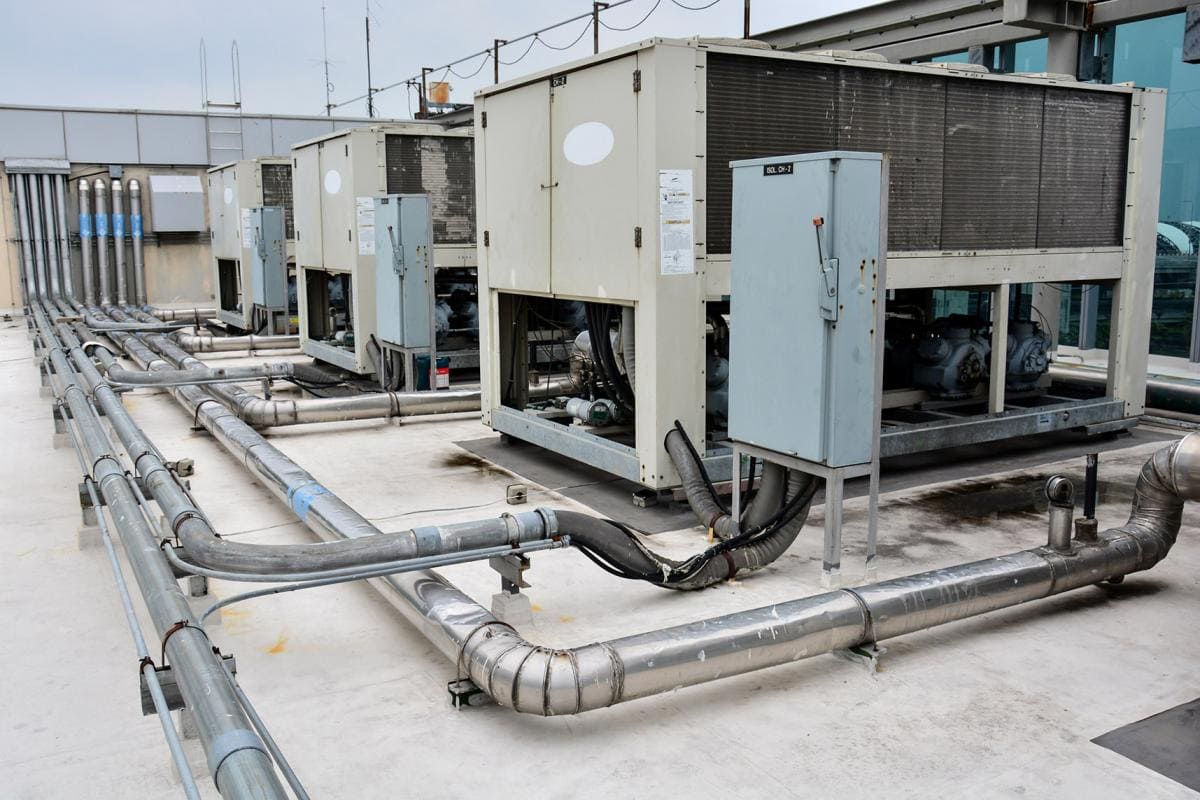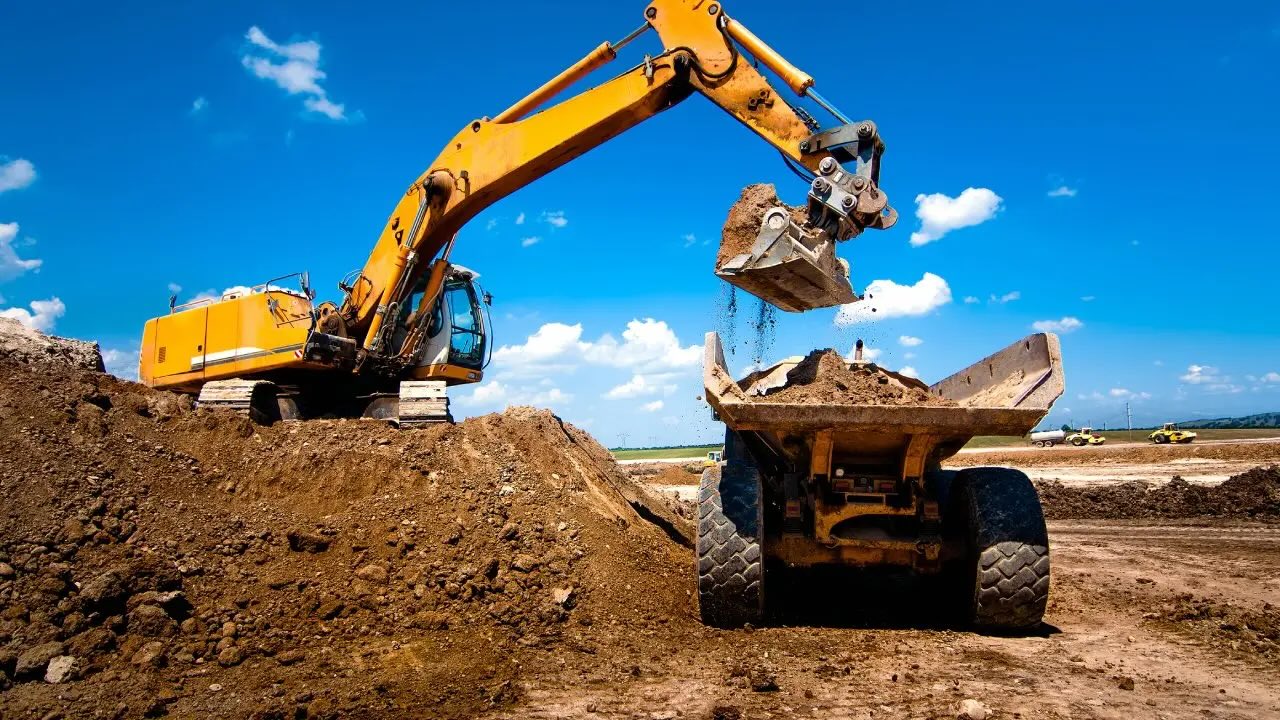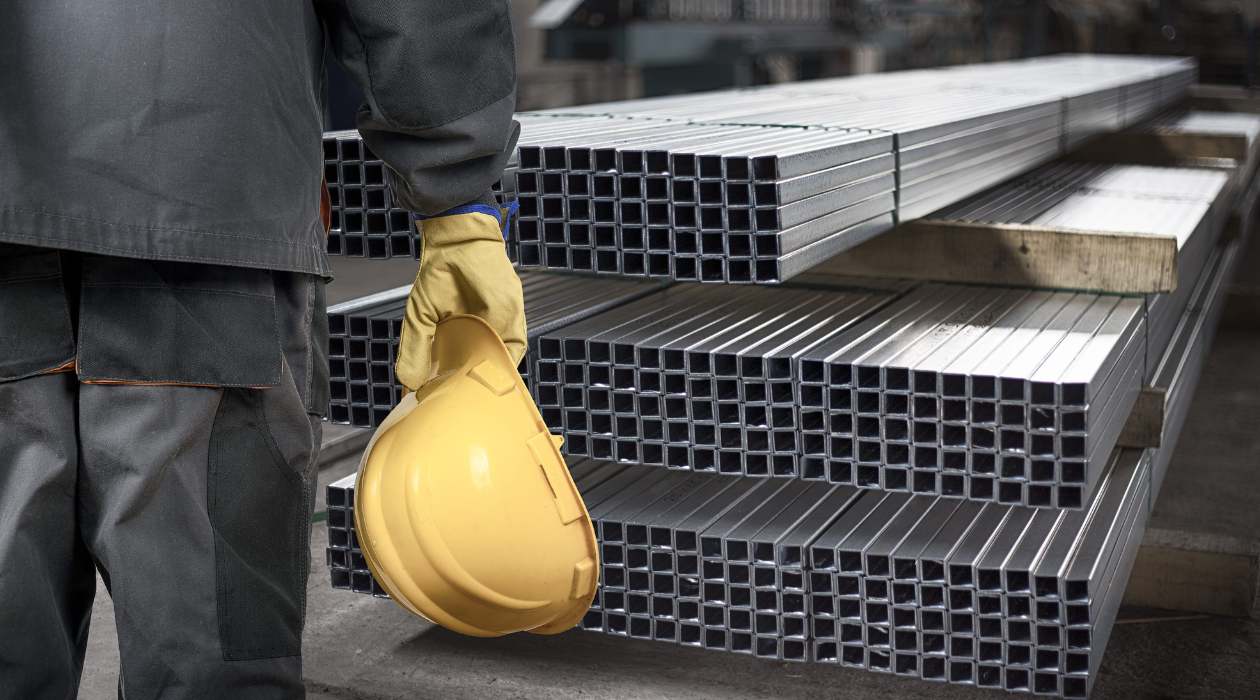Home>diy>Building & Construction>What Does MSDS Stand For In Construction


Building & Construction
What Does MSDS Stand For In Construction
Modified: January 20, 2024
Learn what MSDS stands for in construction and how it relates to building-construction practices. Gain valuable insights and stay informed in the industry.
(Many of the links in this article redirect to a specific reviewed product. Your purchase of these products through affiliate links helps to generate commission for Storables.com, at no extra cost. Learn more)
Introduction
Welcome to the world of construction! As an industry that plays a crucial role in shaping our built environment, construction projects require careful planning, execution, and adherence to safety regulations. One important aspect of construction that often goes unnoticed by the general public is the use of MSDS, or Material Safety Data Sheets. In this article, we will explore what MSDS stands for in construction, its significance, and how it benefits both workers and the overall project.
MSDS, also known as SDS (Safety Data Sheet) in some regions, is a standardized document that provides essential information about hazardous substances used in construction. It serves as a comprehensive guide for workers, contractors, and emergency responders by detailing the properties of the materials, their potential risks, and the necessary safety precautions to minimize those risks.
Understanding the content and importance of MSDS is crucial for anyone involved in construction, from project managers to laborers. It not only helps ensure a safe working environment but also promotes compliance with local and international regulations. Let’s delve deeper into the significance of MSDS in construction projects and explore how it contributes to the overall success and well-being of the workforce.
Key Takeaways:
- Prioritizing MSDS guidelines in construction ensures worker safety, regulatory compliance, and environmental responsibility. Accessing, understanding, and implementing MSDS information empowers construction professionals to create a safer and more sustainable work environment.
- Following MSDS guidelines offers benefits such as reduced hazards, improved emergency response, enhanced risk management, and positive reputation. Embracing MSDS fosters a culture of care, accountability, and efficiency in construction projects.
Read more: What Does PR Stand For In Construction
Understanding MSDS in Construction
Material Safety Data Sheets (MSDS) in construction are documents specifically designed to provide essential information about potentially hazardous substances used in construction projects. These substances can include various materials such as solvents, adhesives, paints, coatings, and construction chemicals.
The primary purpose of MSDS is to ensure the safe handling, storage, and disposal of these substances. It acts as a guide to educate workers about the potential risks associated with each material and helps them take appropriate precautions to protect themselves and others on the construction site.
MSDS contains vital information about the chemical composition of the material, physical and chemical properties, storage requirements, handling precautions, emergency procedures, and first-aid measures. It also provides information on potential health hazards, such as respiratory or skin irritations, and details on personal protective equipment (PPE) that should be worn when working with the substance.
Moreover, MSDS includes information about the environmental impact of the material and instructions for its proper disposal. This ensures that construction companies follow environmentally responsible practices, reducing the negative impact on ecosystems and communities.
It’s essential to recognize that MSDS is not a one-size-fits-all document. Each material used in construction will have its own corresponding MSDS. This means that contractors and workers must have access to the relevant MSDS for every substance they encounter on the construction site.
Now that we understand the basics of MSDS in construction, let’s explore why it is so vital in ensuring the safety and well-being of everyone involved in a construction project.
Importance of MSDS in Construction Projects
MSDS plays a crucial role in construction projects by ensuring the health and safety of workers and mitigating potential hazards. Here are some key reasons why MSDS is of utmost importance:
- Worker Safety: The primary goal of MSDS is to safeguard the well-being of construction workers. By providing comprehensive information about the potential hazards associated with specific materials, workers can take necessary precautions to minimize the risk of accidents, injuries, and long-term health effects. Having access to MSDS helps workers understand how to handle, store, and use materials safely, preventing mishaps and promoting a safer work environment.
- Emergency Preparedness: Construction sites can be dynamic environments where emergencies can arise. MSDS plays a vital role in emergency preparedness by providing guidance on the appropriate actions to take in case of spills, fires, or other incidents. By knowing the proper emergency procedures, workers can respond effectively and swiftly, minimizing damage and ensuring the safety of all individuals onsite.
- Regulatory Compliance: Compliance with local and international regulations is an essential aspect of any construction project. Many jurisdictions require construction companies to maintain detailed records of the hazardous substances used onsite and have readily accessible MSDS. By adhering to these requirements, construction companies can demonstrate their commitment to safety and avoid potential legal and financial repercussions.
- Risk Assessment: MSDS provides valuable information for conducting risk assessments on construction projects. Project managers can identify potential hazards associated with specific materials and implement appropriate control measures. This proactive approach helps minimize risks and create a safer working environment for all involved.
- Efficient Waste Management: Proper handling and disposal of construction waste are crucial to prevent harm to both human health and the environment. MSDS provides guidance on the safe disposal methods for hazardous materials, ensuring that waste management practices align with environmental regulations and minimize negative impacts on ecosystems.
Overall, the importance of MSDS in construction projects cannot be overstated. It is a fundamental tool for promoting safety, reducing risks, and ensuring regulatory compliance. By understanding and implementing the information provided in MSDS, construction companies can create a work environment that prioritizes the well-being of workers and minimizes the potential impact on the surrounding community and environment.
Components of a MSDS
A Material Safety Data Sheet (MSDS) consists of several key components that provide crucial information about the hazardous substances used in construction. Understanding these components is essential for workers and contractors to ensure their safety and comply with industry regulations. Let’s explore the main sections typically found in an MSDS:
- Product Information: This section provides details about the specific product or substance, including its name, manufacturer, chemical formula, and any trade names or synonyms it may have. It also includes the product’s intended uses and any restrictions or limitations.
- Hazard Identification: Here, the MSDS outlines the potential hazards associated with the substance. It includes information on the classification of the product according to relevant regulatory systems (e.g., GHS or OSHA). This section may highlight physical hazards such as flammability or reactivity, as well as health hazards, such as toxic effects and environmental hazards.
- Composition/Ingredients: This section lists the specific chemical components and their respective concentrations in the product. It helps workers identify and understand the potential risks associated with each ingredient and any precautions that need to be taken.
- First Aid Measures: In the event of an accident or exposure, this section provides instructions on the appropriate first aid procedures to follow. It may include information on initial treatments, routes of exposure, and advice for medical professionals.
- Fire-fighting Measures: This section outlines the recommended firefighting methods and equipment suitable for extinguishing fires involving the substance. It may detail any special precautions or firefighting agents to use and highlight any specific hazards to be aware of during firefighting operations.
- Accidental Release Measures: In the event of a spill, leak, or accidental release, this section provides guidance on how to respond and contain the substance safely. It may include information on containment measures, personal protective equipment (PPE) to be worn, and procedures for cleanup and disposal.
- Handling and Storage: This section provides instructions on how to handle, store, and transport the substance safely. It may include guidelines on temperature control, ventilation requirements, and compatibility with other materials. Proper handling and storage procedures are crucial for preventing accidents and maintaining the integrity of the substance.
- Exposure Controls/Personal Protection: Here, information is provided on the recommended exposure limits for the substance, such as occupational exposure limits or threshold limit values. It also details the necessary personal protective equipment (PPE) for workers to prevent exposure, such as gloves, goggles, or respirators.
- Physical and Chemical Properties: This section provides information about the physical and chemical characteristics of the substance, such as its appearance, odor, pH, boiling point, and melting point. Understanding these properties can help workers assess the substance’s behavior and potential hazards.
- Environmental Considerations: The MSDS may include information on the substance’s environmental impact, including its potential for contamination, persistence, and bioaccumulation. It may also outline any specific regulations or guidelines for disposal or release into the environment.
- Disposal Considerations: This section provides guidelines for the proper disposal of the substance, including any specific regulations or recommendations for waste management. It emphasizes environmentally responsible disposal practices to prevent pollution and minimize adverse impacts.
- Transport Information: If the substance requires transportation, this section provides details on the applicable transportation regulations, including packaging requirements, labeling, and any specific precautions to be taken during transit.
These are the primary components typically found in an MSDS. It is important for workers and contractors to familiarize themselves with these sections to understand the potential hazards associated with the substances they are working with and to take appropriate safety measures.
How to Access MSDS in Construction
Accessing Material Safety Data Sheets (MSDS) in the construction industry is crucial to ensure the safety and well-being of workers. Here are some common methods to access MSDS:
- Manufacturer’s Website: Many manufacturers provide MSDS information on their official websites. These websites often have a search feature where users can enter the product name or code to retrieve the corresponding MSDS. It is advisable to bookmark or save these websites for easy access.
- Supplier or Distributor: Construction material suppliers or distributors usually have a repository of MSDS for the products they offer. Reach out to your supplier or distributor and request the MSDS for the specific substances or products you are using. They may provide the MSDS physically or share digital copies via email or their online platforms.
- Construction Site Documentation: On construction sites, MSDS may be readily available in a central location such as the site office or the safety department. Contractors and workers should familiarize themselves with the location of these documents and ensure they can access them easily. It is essential to maintain an up-to-date collection of MSDS for all the materials used on the site.
- Mobile Applications: In the digital age, there are various mobile applications available that provide access to MSDS databases. These apps allow users to search for specific products or scan barcodes to retrieve the corresponding MSDS. Some apps also provide additional features such as offline access, bookmarking, and the ability to create personalized MSDS libraries.
- Industry Associations and Government Agencies: Industry associations and government agencies often provide resources and databases on occupational health and safety. These organizations may offer access to MSDS through their websites or publications. Check with relevant construction industry associations or government health and safety agencies for access to MSDS resources.
- Training and Education Programs: Training and education programs in the construction industry often include modules on safety and health. These programs may provide access to relevant MSDS as part of their curriculum or supplementary materials. Attending such programs or enrolling in construction-related courses can help individuals gain access to valuable MSDS resources.
Remember, it is essential to ensure that the accessed MSDS is the most recent and up-to-date version. Substances and their associated hazards can change over time, and it is crucial to have the latest information. Regularly check and verify the currency of the MSDS to ensure the safety of workers and the compliance with regulations.
By utilizing these methods and resources, workers and contractors can easily access the necessary MSDS to stay informed about the potential hazards of the materials they are working with and take appropriate safety measures as required.
MSDS stands for Material Safety Data Sheet in construction. It provides important information about the hazards of a particular material and how to safely handle it. Always review the MSDS before working with any new materials on a construction site.
Read more: What Does BIM Stand For In Construction
Training and Education on MSDS in Construction
Training and education on Material Safety Data Sheets (MSDS) are crucial in the construction industry to ensure that workers and contractors have the knowledge and skills needed to handle hazardous substances safely. Here are some key aspects of training and education on MSDS in construction:
- General Awareness Training: General awareness training introduces workers to the concept of MSDS, their purpose, and the importance of using them in construction projects. This training highlights the potential hazards associated with various materials and emphasizes the need to follow safety guidelines and procedures provided in the MSDS.
- Interpretation of MSDS: Training programs should focus on teaching workers how to read and interpret the information presented in MSDS. This includes understanding the different sections and components of the MSDS document, such as hazard identification, handling, storage, and emergency procedures. Workers should be trained to extract relevant information from the MSDS and apply it to their daily tasks.
- Safe Handling and Storage: Education on safe handling and storage practices is vital to minimize risks associated with hazardous substances. Training programs should cover techniques for properly handling, transporting, and storing materials, as specified in the MSDS. This training should emphasize the importance of using personal protective equipment (PPE), such as gloves, goggles, or respirators, and following recommended storage requirements to prevent accidents or exposure.
- Emergency Preparedness: Workers should be trained on emergency response procedures outlined in the MSDS. This includes understanding how to recognize and respond to potential incidents or accidents, such as spills, leaks, or fires. Training programs should provide practical knowledge on how to effectively implement emergency procedures, evacuate the area if necessary, and use appropriate fire-fighting measures as specified in the MSDS.
- Refresher Courses: Regular refresher courses are essential in the construction industry, as they reinforce knowledge and ensure that workers stay updated with the latest guidelines and practices. Refresher courses should cover any revisions or changes to MSDS information and address new hazards or safety procedures in the field.
- Integration with Job-Specific Training: MSDS training should be integrated into job-specific training programs. For example, if workers are using specialized equipment or performing specific tasks that involve hazardous substances, the training should include specific information on the associated MSDS and how it relates to their job responsibilities. This ensures that workers have a comprehensive understanding of the risks and necessary precautions related to their specific work tasks.
Training on MSDS should be conducted by qualified instructors and experts in occupational health and safety. They should provide practical examples, case studies, and hands-on demonstrations to enhance learning and retention. Additionally, training programs should encourage active participation, engagement, and open discussions to address any questions or concerns that workers may have.
Regular assessments and evaluations can be employed to gauge the effectiveness of the training and identify areas where additional support or clarification is needed. It is crucial to provide opportunities for workers to provide feedback and suggestions for improving the training programs.
By investing in comprehensive training and education on MSDS, construction companies can ensure that their workforce has the knowledge and skills to handle hazardous substances safely, minimizing risks and creating a safer work environment.
Compliance with MSDS Requirements in Construction
Compliance with Material Safety Data Sheets (MSDS) requirements is essential in the construction industry to ensure the safety of workers and to meet regulatory obligations. Here are some key aspects of compliance with MSDS requirements:
- Availability of MSDS: Construction companies must ensure that relevant and up-to-date MSDS are readily available for all hazardous substances used in their projects. This includes maintaining a comprehensive collection of MSDS for each material, ensuring they are easily accessible to workers, and updating them as needed.
- Proper Documentation: It is important to maintain a clear and organized record of the MSDS for each substance used on the construction site. This documentation should include details such as the product name, manufacturer, date of acquisition, and any revisions or updates to the MSDS. Having proper documentation demonstrates a commitment to compliance and facilitates easy access in case of audits or inspections.
- Training and Education: Compliance with MSDS requirements includes providing adequate training and education to workers on the use and interpretation of MSDS. Construction companies should ensure that workers receive comprehensive training on the hazards associated with the materials they handle, understand how to read and interpret MSDS, and know the appropriate safety measures to follow.
- Regular Updates and Revisions: MSDS information can change over time, and it is crucial to regularly review and update the MSDS records to reflect any changes in the substances or their associated hazards. Construction companies should stay in touch with suppliers, manufacturers, and regulatory bodies to receive updated MSDS and communicate any changes or updates to workers promptly.
- Consistent Implementation: Compliance with MSDS requirements necessitates consistent implementation of the safety procedures outlined in the MSDS. This includes following recommended handling, storage, and disposal practices, as well as using appropriate personal protective equipment (PPE) as indicated in the MSDS. Construction companies should develop and enforce robust protocols to ensure that workers adhere to these guidelines consistently.
- Collaboration with Suppliers and Contractors: It is important to collaborate closely with suppliers and contractors to ensure compliance with MSDS requirements. This includes obtaining MSDS from suppliers for the materials provided, verifying their accuracy and currency, and providing copies to contractors involved in the project. Effective communication and coordination between all parties involved help maintain a unified approach to compliance.
- Regular Inspections and Audits: Conducting regular inspections and audits helps ensure compliance with MSDS requirements. These inspections can identify any gaps or areas of improvement, provide opportunities to reinforce safety practices, and ensure that the MSDS documentation is accurate and up-to-date. Implementing corrective actions based on inspection findings helps maintain a high level of compliance.
Non-compliance with MSDS requirements can lead to potential hazards, legal liabilities, and financial consequences. Therefore, it is essential for construction companies to prioritize compliance and establish a robust system to track, update, and implement MSDS-related measures.
By being proactive and committed to compliance with MSDS requirements, construction companies can create a safer working environment, mitigate risks, protect workers, and demonstrate their commitment to occupational health and safety.
Benefits of Following MSDS Guidelines in Construction
Following Material Safety Data Sheets (MSDS) guidelines in construction projects offers numerous benefits for both workers and the overall success of the project. Let’s explore some of the key advantages:
- Enhanced Worker Safety: The primary benefit of following MSDS guidelines is the enhanced safety of workers. By adhering to the recommended safety procedures and precautions outlined in the MSDS, workers can avoid accidents, injuries, and adverse health effects. This leads to a healthier and more productive workforce.
- Reduced Risk of Hazards: MSDS provides vital information about the potential hazards associated with specific materials used in construction. Following the guidelines helps minimize the risk of incidents such as fires, spills, or exposure to harmful substances. By understanding the hazards and taking appropriate precautions, workers can prevent potential dangers on the construction site.
- Improved Emergency Response: MSDS guidelines include detailed instructions for emergency response in case of accidents or incidents. By following these guidelines, workers can respond swiftly and effectively, minimizing the impact of emergencies. Proper emergency response also helps protect workers, reduce property damage, and maintain continuity in construction operations.
- Regulatory Compliance: Compliance with MSDS guidelines ensures that construction projects meet regulatory requirements. Many jurisdictions require construction companies to have access to and follow MSDS for hazardous substances. By staying compliant, construction companies avoid potential penalties, legal issues, and reputational damage.
- Environmental Responsibility: Following MSDS guidelines promotes environmentally responsible practices in construction. MSDS provides information on the proper handling, storage, and disposal of hazardous substances, reducing the potential for environmental contamination and damage. By following these guidelines, construction companies play their part in protecting ecosystems and minimizing their environmental footprint.
- Enhanced Risk Management: Utilizing MSDS guidelines helps construction companies effectively manage risks associated with hazardous materials. By understanding the potential hazards and implementing the recommended controls, companies can prevent accidents, minimize liability, and protect their workers, clients, and the general public from harm. This proactive approach enhances overall risk management practices in construction projects.
- Improved Project Efficiency: Following MSDS guidelines contributes to improved project efficiency. By having clear guidance on handling, storage, and safety measures, construction workers can perform tasks more efficiently and confidently. This translates to smoother operations, fewer disruptions due to accidents or incidents, and improved overall project timelines.
- Positive Reputation: Employing strong safety measures, including following MSDS guidelines, builds a positive reputation for construction companies. Clients, stakeholders, and regulatory bodies recognize and appreciate companies that prioritize the well-being and safety of their workers. A positive reputation can lead to increased business opportunities and client trust.
- Employee Engagement and Morale: Prioritizing worker safety through the implementation of MSDS guidelines fosters a culture of care and accountability. When employees see that their well-being is a priority, it leads to increased engagement, job satisfaction, and morale. This, in turn, can result in higher productivity levels and reduced turnover rates.
The benefits of following MSDS guidelines in construction are significant and wide-ranging. By prioritizing the safety of workers, complying with regulations, and implementing environmentally responsible practices, construction companies can create a safer work environment, achieve project success, and build a positive reputation within the industry.
Conclusion
Material Safety Data Sheets (MSDS) play a crucial role in the construction industry, providing valuable information about the potential hazards associated with hazardous substances. Understanding and following MSDS guidelines is essential for ensuring the safety of workers, protecting the environment, and promoting regulatory compliance.
By accessing and utilizing MSDS, construction workers can make more informed decisions, take necessary precautions, and minimize the risks associated with handling hazardous materials. MSDS guides workers in understanding the specific properties, potential health hazards, and appropriate safety measures for each substance, empowering them to create a safer work environment.
Compliance with MSDS requirements establishes a strong foundation for risk management, emergency preparedness, and regulatory compliance. By providing comprehensive training and education on MSDS, construction companies can empower their workers with the knowledge and skills needed to handle hazardous substances safely.
Following MSDS guidelines in construction projects delivers numerous benefits, including enhanced worker safety, reduced risk of accidents, improved emergency response, regulatory compliance, environmental responsibility, enhanced risk management, improved project efficiency, positive reputation, and increased employee engagement.
As the construction industry continues to advance, it is crucial for construction companies and workers to prioritize the access and adherence to MSDS guidelines. By embracing these guidelines, construction projects can be executed with greater safety, efficiency, and environmental responsibility, leading to successful outcomes.
In conclusion, MSDS is a valuable tool that should be embraced and diligently followed in the construction industry. By prioritizing worker safety, complying with regulations, and promoting responsible practices, construction professionals can build a safer and more sustainable future for everyone involved in the construction process.
Frequently Asked Questions about What Does MSDS Stand For In Construction
Was this page helpful?
At Storables.com, we guarantee accurate and reliable information. Our content, validated by Expert Board Contributors, is crafted following stringent Editorial Policies. We're committed to providing you with well-researched, expert-backed insights for all your informational needs.















0 thoughts on “What Does MSDS Stand For In Construction”